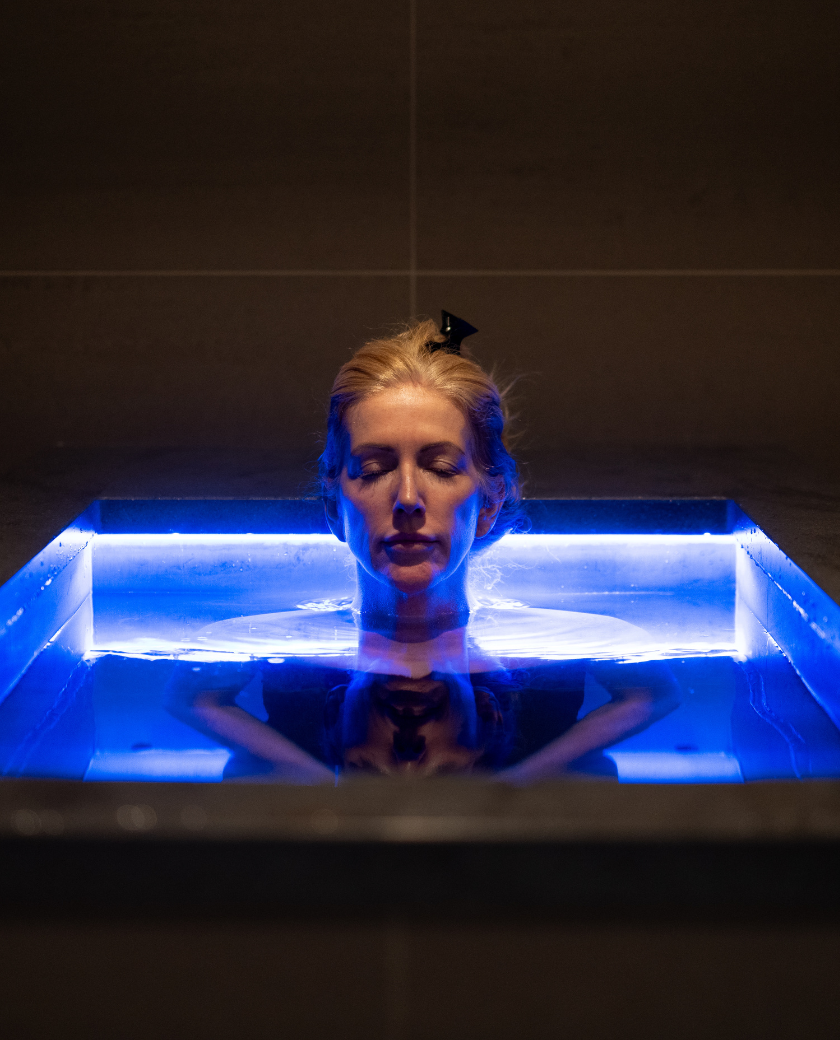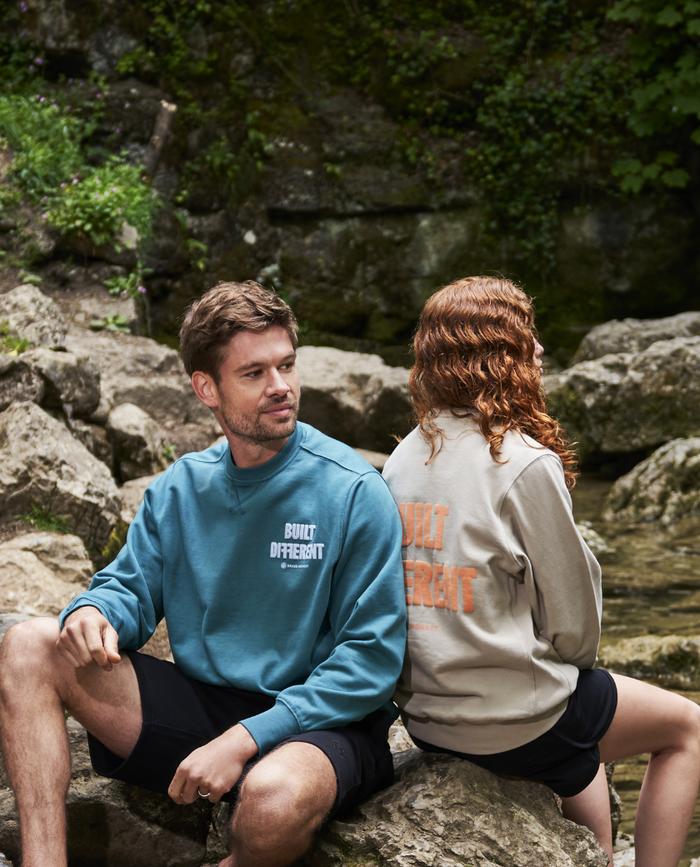A Beginner’s Guide to Wild Swimming

Can you feel the lure of the lake? Do you daydream of wallowing in the river and cliff-jumping into a natural plunge pool? If wild swimming is on your bucket list, we’re here to make it happen. Swimming in nature is one of the most rewarding things we can do for our well-being, but like anything wild, it deserves respect. That’s why we’ve put together a rundown of tips and advice to help you stay safe when seeking out those glorious dip spots.
Safety First

Never swim alone
Swimming in the wild can be unpredictable and even when conditions seem consistent you never know when you might run into trouble. The temperature, a new hidden obstacle, or even your health could be at play. Find a wild swimming group to ensure there are plenty of people to look out for you (and you for them) or why not take a friend?
Entry and exit points
Before you think about the water, plan your entry and exit points to approach the water in the safest way possible. Once you’re in the water, should you need to get out quickly, you know where you’re heading.
Knowing your limits
Some people are more cold-adapted than others, meaning they can stay in the water for longer. This takes time and consistent attention to how your body is feeling and the instincts that tell you when you’ve had enough. It’s important not to ignore these signals. They’re there to keep you alive. Don’t be drawn into peer pressure. It’s great to swim together, but knowing your limits is a solo effort.
Currents
Swimming in the sea or a river will carry risks of underwater currents pulling swimmers in various directions, usually away from the shore or riverbank. Currents are considered dangerous at 2mph or over, but being aware of them and staying away is key.
Water temperature
Usually, deeper water is colder if it receives little sunlight, especially if fed by springs or water running from high ground. Breathing techniques are key when entering cold water. Slow controlled breaths tell your body you are ok. You’re less likely to hyperventilate and get into trouble. Enter the water slowly. Give your body time to adapt. Try to avoid putting your hands in first. They will feel the cold much more keenly than the rest of your body. If the water is 10 degrees or below and wild swimming is fairly new to you, limit yourself to a couple of minutes (at most) to prevent yourself from feeling unwell after your swim.
Water depth
Make sure you know (roughly) how deep the water is and ask yourself: Are you comfortable if you can’t touch the floor? Do you know where the water becomes more shallow? If jumping in, ask yourself if the water 100% deep enough to support your fall?
Beware of cold shock
It's one of the biggest dangers of cold water immersion and can lead to drowning even for strong swimmers. When you enter the water, the sudden drop in skin temperature triggers an involuntary gasp reflex, which can cause someone to inhale water, especially if they're underwater. Your breathing rate increases dramatically, which can lead to hyperventilation and further increase the risk of inhaling water. The body constricts blood vessels in the skin to conserve heat, which increases heart rate and blood pressure. This can be dangerous for people with heart conditions. This combination can cause panic, making it difficult to think clearly and swim effectively. Cold shock can happen very quickly, within seconds of entering cold water. It can be dangerous even for young and healthy people. If this happens you must focus on steadying your breathing. Don’t try to swim at first, instead focus on getting your body to float. Check out the RLNI guide to floating. Call for help and if your breathing is sufficiently calm and you feel able, begin to swim gently to shore.
Obstacles in the water
Assess the area before you enter. Are there reeds in the water that could block or complicate your entry or exit? Are there boulders or rocks you can’t see that could injure you or even metalwork and glass on the lake, sea or river bed that could cause injury? If you spot anything and you feel it’s not safe do not enter the water. There will be other, safer dip spots waiting for you.
Wildlife
Most healthy bodies of water in the wild contain wildlife ranging from fish to swans and a few things in between. Avoid any nesting areas, and do not look a swan in the eye if it’s near you, this is a sign of aggression, and it will react. Be aware of leeches in slow-moving rivers, ponds, or lakes.
Water Quality
Take care to note the level of algae in the water, if any. This is a sign of unhealthy water, and some blue-green blooms are harmful, so they are best avoided if present in the water. Sadly, pollution is a rising factor on our coastlines and waterways. Check locally on the presence of algae and pollution. You can download the Safer Seas & Rivers Service app to help guide you on the safety of the water on the coast and major rivers in the UK. It also has tide times, information on life guide services, and a helpful in-app tool to alert your MP to pollution in your area.
Don’t be a lemming
With everything we’ve covered so far, remember to make your own assessments and judgments on every wild swim. Just because other people are doing it doesn’t mean it’s safe or right for you to do it too.
For more water safety tips, including easy instructions on How to Float, the RLNI has a fantastic source of information.
What do I need to go wild swimming?

Hat
Most wild swimmers wear hats when dipping in cold water, especially in the colder months and often all year round if the water temperature demands it. We lose a lot of body heat through our head so slowing that loss down with a cosy hat makes sense. If you’re looking for a more intense swim, a neoprene hat, similar to a swimming cap is best.
Gloves
Great if you have a rocky scramble in and out of the water, and if you’re swimming on a cold day, gloves can help you stay in the water for longer. Our hands and faces have more nerve endings than anywhere else on our bodies and are the most sensitive areas to temperature changes. In very cold water, wild swimmers will protect their hands to help with the discomfort with a neoprene glove. Thermal, anti-slip diving gloves also work well.
Water shoes
Before you get near the water, there will often be a rocky shore or riverside, pebbles, mud, and roots to navigate. When you get in the water, your grip will help you control your dip so a decent water shoe or pair of neoprene socks will set you in good stead. They’ll become your new best friend and won't cost the earth. They’ll also provide a little relief with light insulation in the colder months.
Swimsuit/wetsuit
Unless you’re hunting for a secluded spot for a skinny dip, a swimsuit or wetsuit is a must. Amongst all the other things you’re packing, it’s surprisingly easy to forget the main thing you need!
Towel
Bring the biggest towel you can find. Wrap up when you climb out of the water to start warming up immediately. You can even wriggle out of your wet things and protect your modesty at the same time. If your towel doesn’t need to double up as a changing room, a microfibre towel will dry quickly and be less likely to pick up sand and mud.
Loose clothing
Have you ever tried to put on a pair of jeans or leggings when your legs aren’t 100% dry? Well, think about getting dressed when there’s a nip in the air and you’re rushing to get warm. The easiest way is to keep everything loose. Loose joggers, an oversized, t-shirt, and a jumper are the way to go. When the days are warm, why not channel your inner reptile and soak up the sun’s heat instead?
A flask
In the cooler months, your hands will get cold in the water, especially if you’re not wearing gloves, so take a flask of your favourite hot drink and a cup or two to sip with your dip buddy and warm up from the inside out. Why not bring biscuits or a slice of cake while you’re at it?
Changing mat
A small hand towel will do, or foam changing mats are great if the water’s edge is muddy or uncomfortable underfoot. Throw it in the wash with your towel or wipe down the foam option ready for next time.
Changing Robe
The more technical version of changing under a big towel. Changing robes are made roomy to allow easy changing into and out of swimsuits quickly, leaving you with a dry, comfortable coat-like robe to wear while you enjoy a hot drink and even wear it on to your next destination. The good ones often come with built-in pockets for keys, wallets, and other valuables making them extra handy. Quick to dry, and easy to clean, they’re a staple in the wardrobes of the wild swimming community.
Goggles & earplugs
If you want to get some serious lengths under your belt, get yourself a good pair of goggles and earplugs. Most of the wild swimming community keep their heads above the water with the odd dunk in the warmer months so it’s not essential if you take a more gentle approach.
Tow float
In addition to a swim buddy, some open water venues will insist users wear a tow float but they’re also great to wear wherever you are in case the worst happens. Attached to your body, they’re never far if you need support and onlookers will always know where you are especially when you’re out for a big swim.
Ready to take the plunge? Find a wild swimming spot near you in our dip spot series in our journal.












